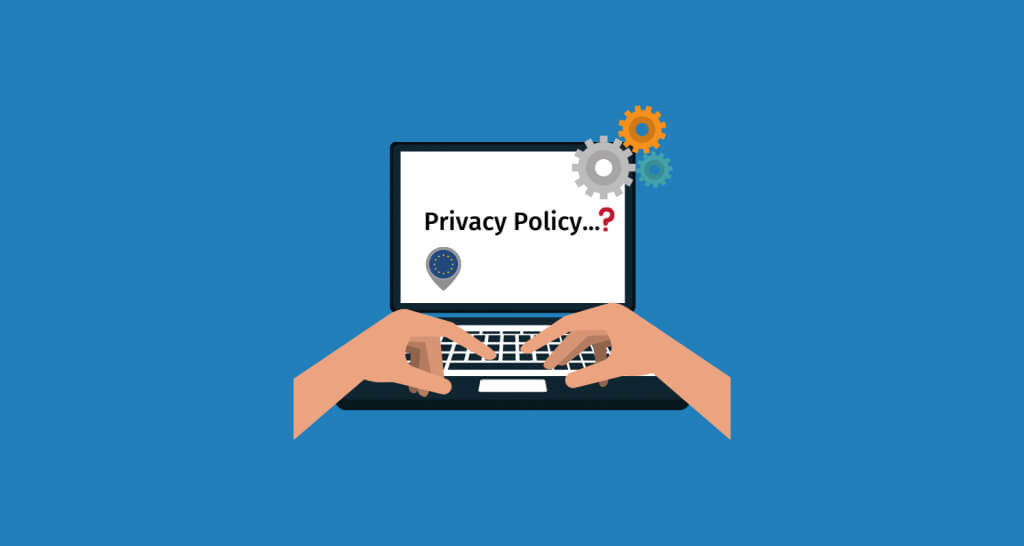Watch this video or read the article below
![]()
Transcript
What needs to be included in a basic privacy policy? Whether you’re targeting visitors in GDPR countries or not, it’s always a good idea to answer the following questions in any privacy policy.
These questions could be, who is the site owner? Who does a visitor need to contact about their rights and their contact info? What data is being collected? How is it being collected? Why your site is collecting the data? For what purpose? For example, are you collecting info such as names, email addresses, IP addresses, phone numbers, in order to sell or send items for print or email marketing, for your general announcements, for your customer service, or for something else?
You need to detail what you’re going to do with this information. What third parties will have access to the information? Such As we mentioned, Google Analytics, Facebook, Payment Processors, etc. Anybody who’s not you. What rights do users have? Can they request to see the data that you have on them? Can they request to rectify, erase, or even block their data?
Remember, visitors to your website must first give their data to you willingly, and then have the ability to decline or withdraw consent to their data. We also want to include what is the process to notify users when you update the privacy policy, your policy can also include an effective date. And if you target people in the EU, you must have a separate cookie policy as well.
Yes, we know this is a lot of technical information, right? So how do we write it so that it will pass the test of law, even if. we’re not attorneys.
There are three ways that you can develop a privacy policy for your website. You can either purchase a template, you can generate one online, or you can hire an attorney
Let’s go over this a little more in detail
As an entrepreneur or small business owner building your website, you know the importance of doing things the right way – the TOTO way. One crucial aspect of this is having a clear and comprehensive privacy policy on your website.
A privacy policy website is a statement that outlines how your website collects, uses, and protects the personal information of visitors. It’s not just a formality; it’s a legal requirement in many regions and can help build trust with your audience.

Why You Need a Privacy Policy
In today’s digital age, most websites collect some form of user data, whether it’s for analytics, marketing purposes, or order fulfillment. Even if you’re not running an e-commerce site, visitors to your website may provide their email addresses to subscribe to your newsletter or leave comments on your blog.
Having a privacy policy generator in place lets your visitors know exactly what information you’re collecting, how you’re using it, and how they can request to have their data modified or deleted. This transparency is essential for building trust and maintaining a positive relationship with your audience.
Moreover, privacy laws and regulations like the GDPR (General Data Protection Regulation) in the European Union and various state laws in the United States require websites to have a privacy policy if they collect personal data from users. Failing to comply with these regulations can result in hefty fines and legal consequences.
Think of it this way: imagine going to a friend’s house, and as soon as you walk in, they start taking down your personal information without explaining why or asking for your consent. You’d probably feel uncomfortable and violated, right? A privacy policy website is like your digital welcome mat, setting expectations and boundaries from the get-go.
What to Include in Your Privacy Policy
While the specifics may vary depending on your website’s purpose and the type of data you collect, a well-crafted privacy policy template should address the following key points:
– Site Owner and Contact Information: Clearly identify who owns and operates the website, and provide contact details for users to reach out about their privacy rights.
– Data Collection: Specify what personal information is being collected (e.g., names, email addresses, IP addresses, phone numbers) and how it’s being collected (e.g., through forms, cookies, analytics tools).
– Purpose of Data Collection: Explain why you’re collecting this data and how it will be used (e.g., for marketing purposes, order fulfillment, improving the website experience).
– Third-Party Access: Disclose if any third parties (e.g., analytics providers, payment processors, advertising networks) will have access to the collected data.
– User Rights: Outline the rights users have over their personal information, such as the ability to access, rectify, or delete their data.
– Data Retention and Security: Explain how long you’ll retain user data and what measures are in place to protect it from unauthorized access or breaches.
– Policy Updates: Specify how users will be notified if the privacy policy is updated or changed.
– Cookies: If you use cookies on your website, include a separate cookie policy detailing their purpose and how users can manage their cookie preferences.
It’s important to present this information in a clear and easy-to-understand manner, avoiding complex legal terminologies as much as possible. After all, your goal is to build trust and transparency with your users, not confuse or overwhelm them.
Methods for Creating a Privacy Policy
Now that you understand why a privacy policy generator is crucial and what it should cover, let’s explore different methods for creating one for your website.
1. Using Online Privacy Policy Generators
One of the most convenient and cost-effective options for small businesses is to use an online **privacy policy generator** tool like Termageddon or Termly. These platforms take you through a series of questions about your website, data collection practices, and legal requirements, and then generate a customized privacy policy based on your responses.
The benefit of using these privacy policy generator tools is that they stay up-to-date with the latest privacy laws and regulations, ensuring your policy is compliant. Additionally, many of them offer automatic updates and the ability to embed your policy directly on your website using an iframe, so you don’t have to worry about manually updating it every time there’s a change.
At TOTO Coaching, we use and recommend Termageddon for generating privacy policies (and terms of service, which we’ll cover in a separate guide). They offer an affiliate link that you can use to try out their service – it doesn’t cost you anything extra, but it helps strengthen our relationship with them and may even get you a discount.
2. Using Privacy Policy Templates
Another option is to use pre-written privacy policy templates that you can find online. However, we generally don’t recommend this approach as the sole method for creating your privacy policy. Generic templates may not accurately reflect your specific data collection practices or legal obligations, potentially leaving you non-compliant or vulnerable to legal issues.
That being said, a well-crafted privacy policy template can serve as a solid starting point if you plan to have an attorney review and customize it for your business.
3. Hiring an Attorney
For businesses with more complex data collection practices or those operating in highly regulated industries, hiring an attorney to draft a custom privacy policy may be the best option. While more expensive, working with a knowledgeable attorney can ensure your policy is airtight and tailored to your specific needs and legal requirements.
Alternatively, you could take a hybrid approach: generate a basic privacy policy using an online tool, and then have an attorney review and refine it to meet your unique business needs.
Displaying Your Privacy Policy
Once you’ve created your privacy policy, the next step is to make it easily accessible to your website visitors. Here are some best practices:
– Create a dedicated “Privacy Policy” page on your website and include the full text of your policy.
– Link to your privacy policy page in the footer of your website, as well as from any user-filled forms or areas where personal data is collected.
– If using an online generator like Termageddon, embed the provided iframe code on your privacy policy page to ensure it always displays the most up-to-date version.
– For more complex websites with user accounts or forums, consider requiring users to agree to your privacy policy during the sign-up or registration process.
By prominently displaying your privacy policy and making it easily accessible, you’ll not only meet legal requirements but also demonstrate transparency and build trust with your users.
Final Thoughts
Creating an effective privacy policy for your website is not just a legal obligation – it’s an opportunity to establish trust and transparency with your audience. By clearly outlining how you collect, use, and protect personal data, you’ll help put your visitors at ease and create a more positive user experience.
Whether you use an online privacy policy generator, work with an attorney, or take a hybrid approach, the key is to ensure your policy accurately reflects your data practices and complies with relevant privacy laws and regulations.
At TOTO Coaching, we’re committed to helping entrepreneurs and small business owners like yourself navigate the complexities of running an online business – and having a robust privacy policy is an essential part of that journey. So take the time to get it right, and watch as your audience’s trust and confidence in your brand grow.
Sign up for a Toto Coaching class today
This is the Toto way.


Former Web Development Agency Owner
Founder of Toto Coaching
Founder of Toto SEO
Jennifer DeRosa
Jennifer is the author of "Building DIY Websites for Dummies," a new addition to the renowned "for dummies" series.
She is also the visionary behind Toto SEO and Toto Coaching. As the founder of Toto SEO, she specializes in offering SEO solutions tailored for small businesses. Through Toto Coaching, she provides an interactive online course, complete with weekly coaching sessions, empowering small businesses and entrepreneurs to craft websites that not only presell their offerings but also foster trust among their clientele.
Jennifer's thirst for knowledge recently led her to complete a program on No Code Artificial Intelligence and Machine Learning at the prestigious MIT University.
Before her current ventures, Jennifer was the driving force behind TechCare, a web development agency she founded and led from 2001 to 2021, when she had a successful Exit.
Her career also includes consulting roles with industry giants such as Mercedes Benz Credit Corporation, US Surgical, GTE, GE Capital, Unilever, and Calvin Klein.
She is a frequent speaker for WordPress Meetups, SCORE, and others.
Are You Searching the Internet for Help Building Your Website or Making it Better?
We are here to help you!!
Check out the entire DIY Website Building Course
where we walk you through building a website
from Start to Finish!
What are you waiting for? Let's get your website built!!
